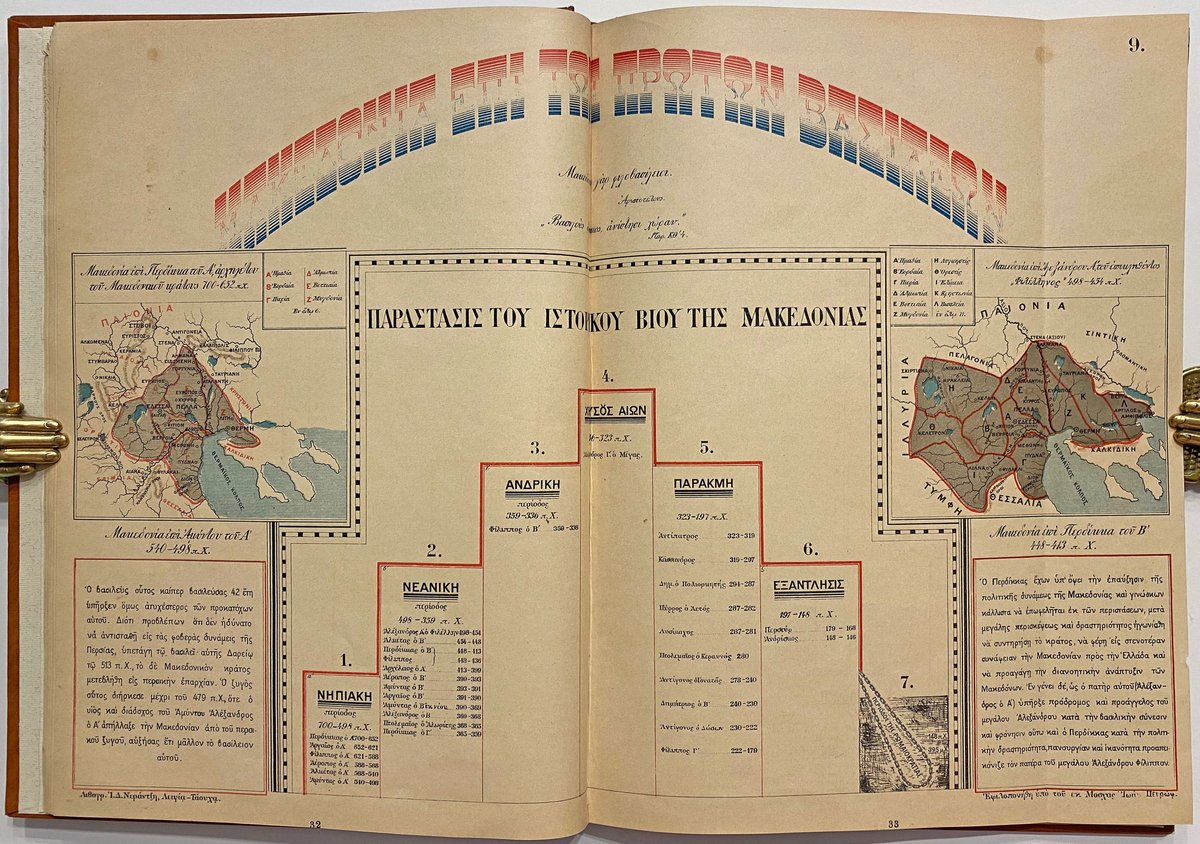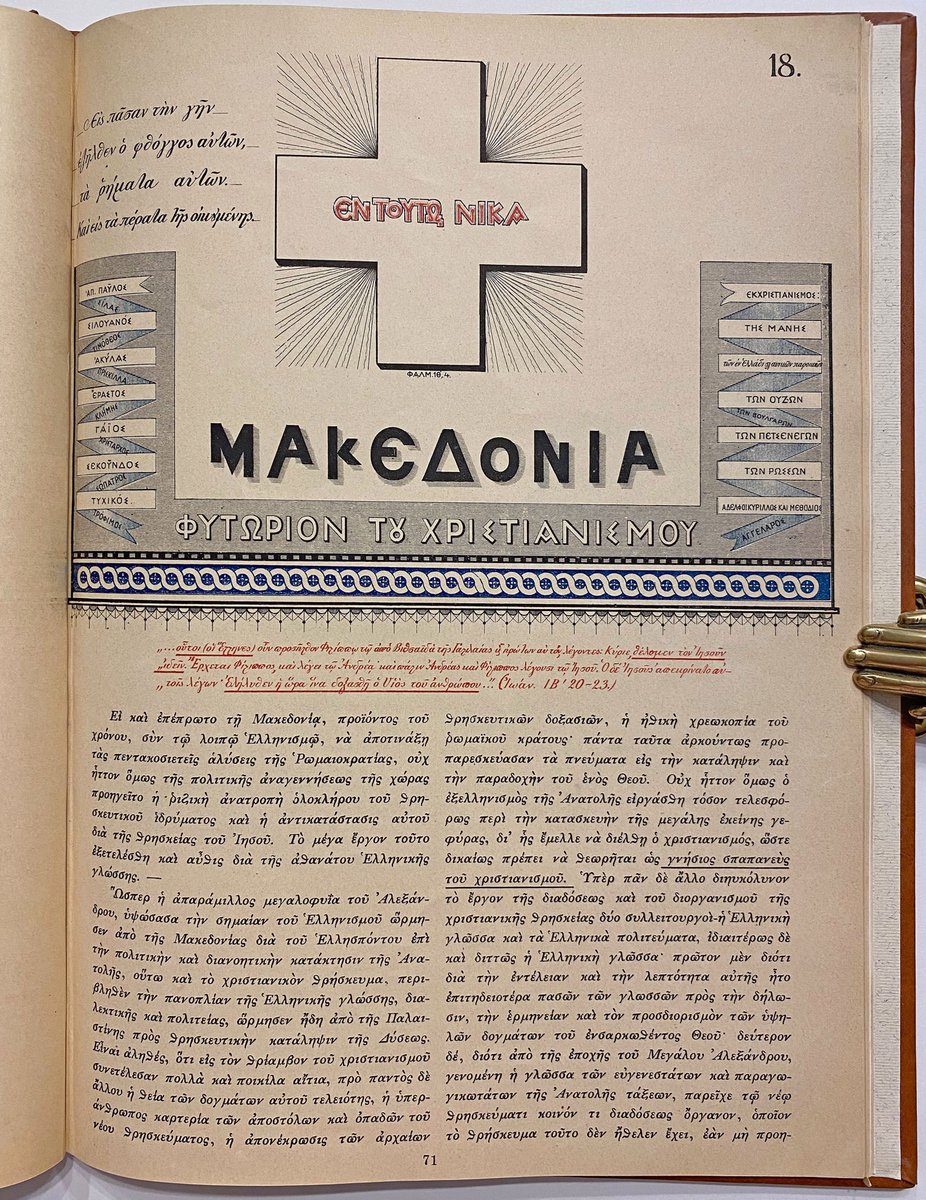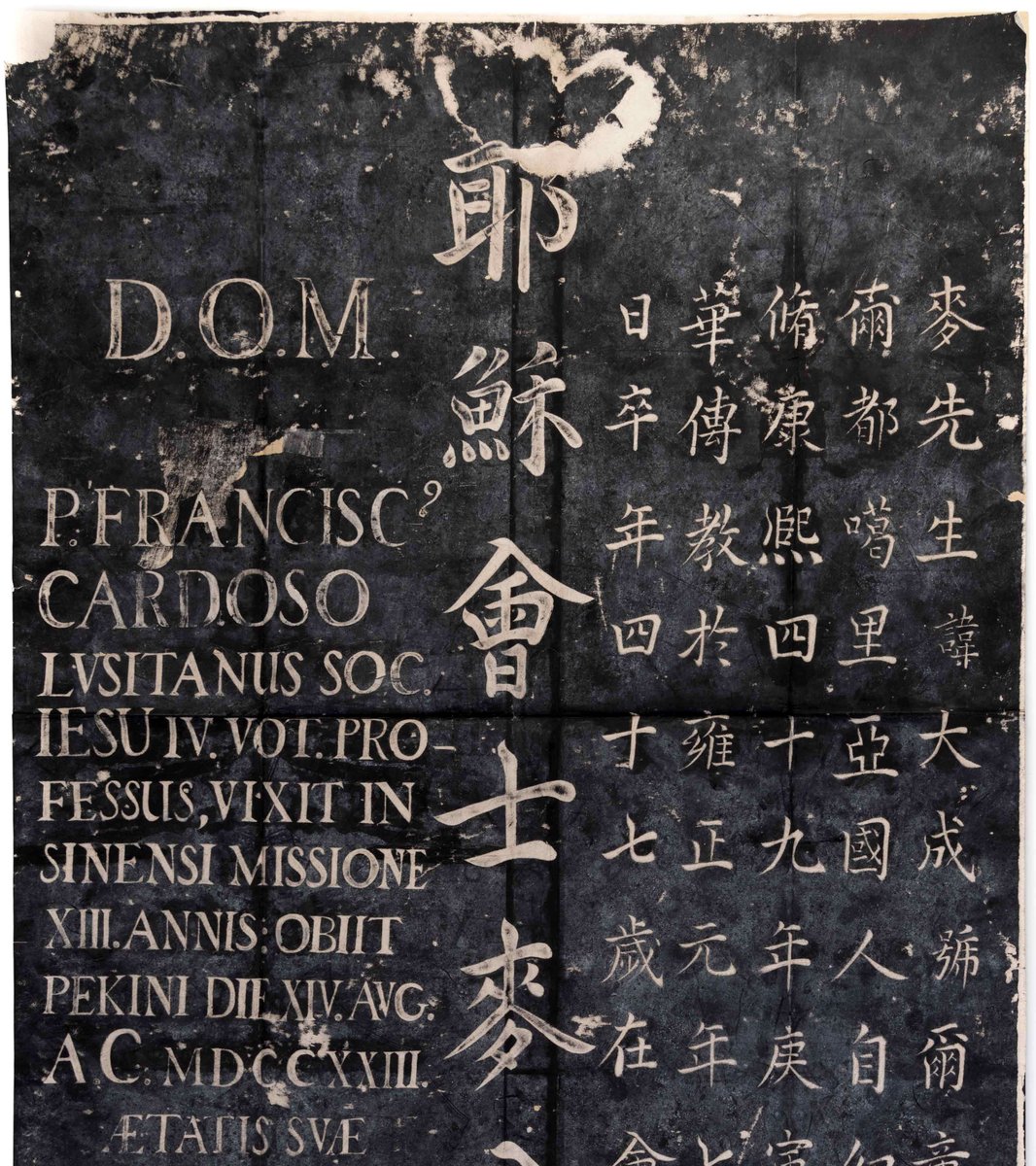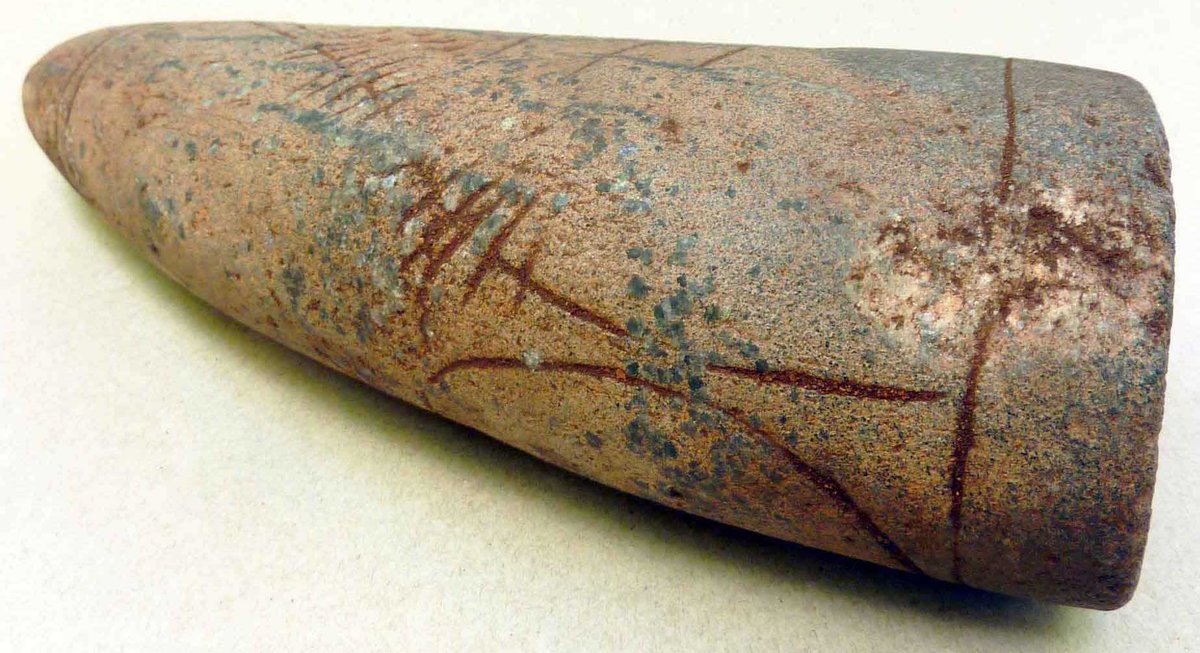
A simply astonishing object: a reliquary tableau with five illuminated miniatures, a papal Agnus Dei wax seal of Pope Sixtus V, and twelve intact saints’ relics (bone and wood fragments) sewn on to the surface with silver and gold thread. 1/ 
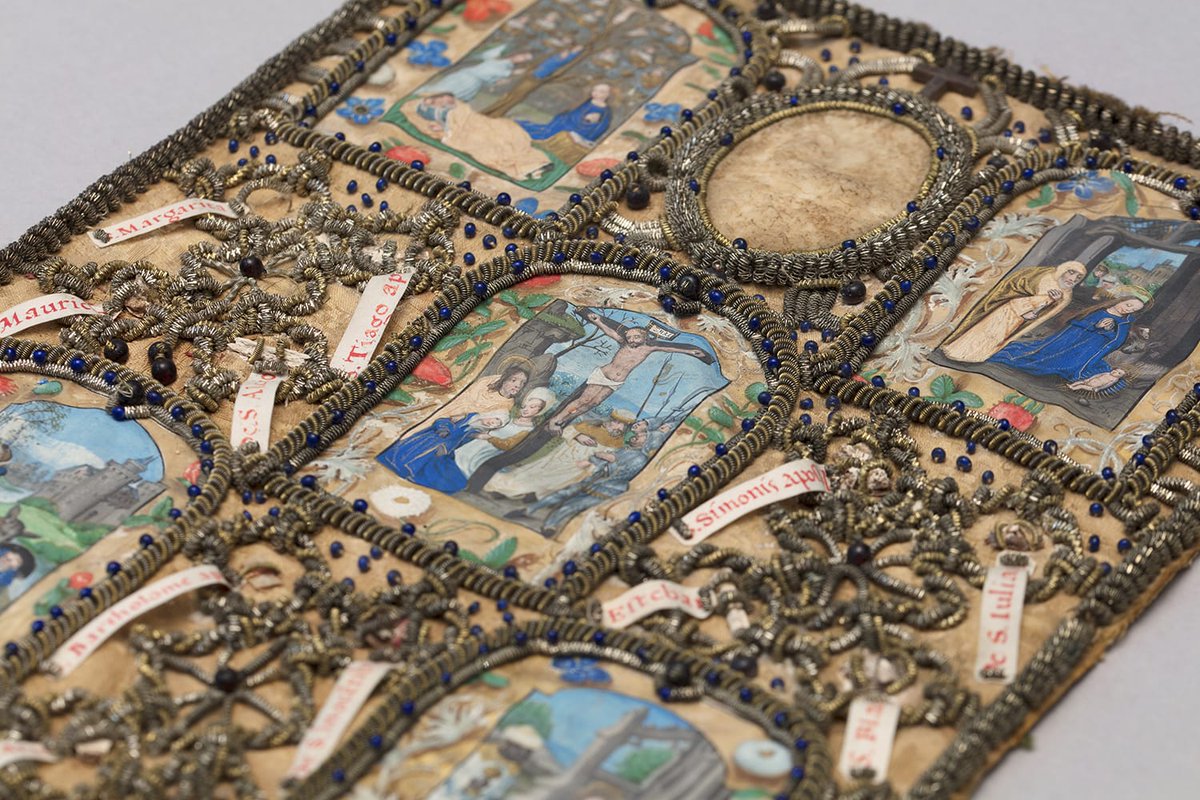
The miniatures are Southern Netherlandish, painted circa 1500-20 and likely cut from a Book of Hours. The tableau itself was assembled in Spain (perhaps Andalusia) in circa 1590. It measures 23.8 x 18 cm overall; the wax seal 4.6 x 3.5 cm; the miniatures circa 7 x 5 cm. 2/ 



The tableau is made from ink & gilding on parchment (the miniatures), bones & wood (the saints' relics), wax recovered from the previous year's Easter candles (the Agnus Dei seal) and coiled silver & gold wire, blue glass beads & yellow silk on linen, stiffened with size. 3/ 
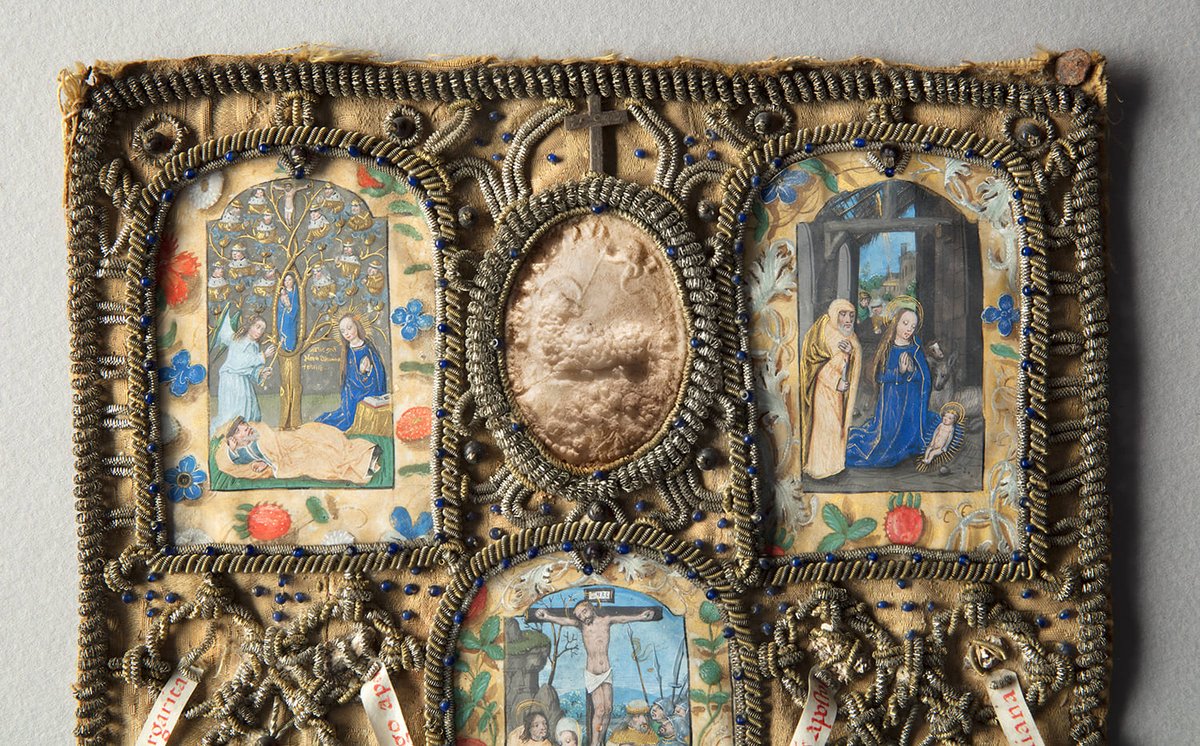
It likely that the patron responsible for its creation commissioned an artist skilled at textile- and metal-working to combine their most precious, sacred objects into a single work of art, incorporating ancient relics and medieval manuscript illuminations. 4/ 





This reliquary tableau is a remarkable artifact of both the creative repurposing of earlier manuscripts during the later medieval era, and the fervent, personal piety and devotion so closely bound up with the cults of saints in the Middle Ages. 5/ 





• • •
Missing some Tweet in this thread? You can try to
force a refresh



